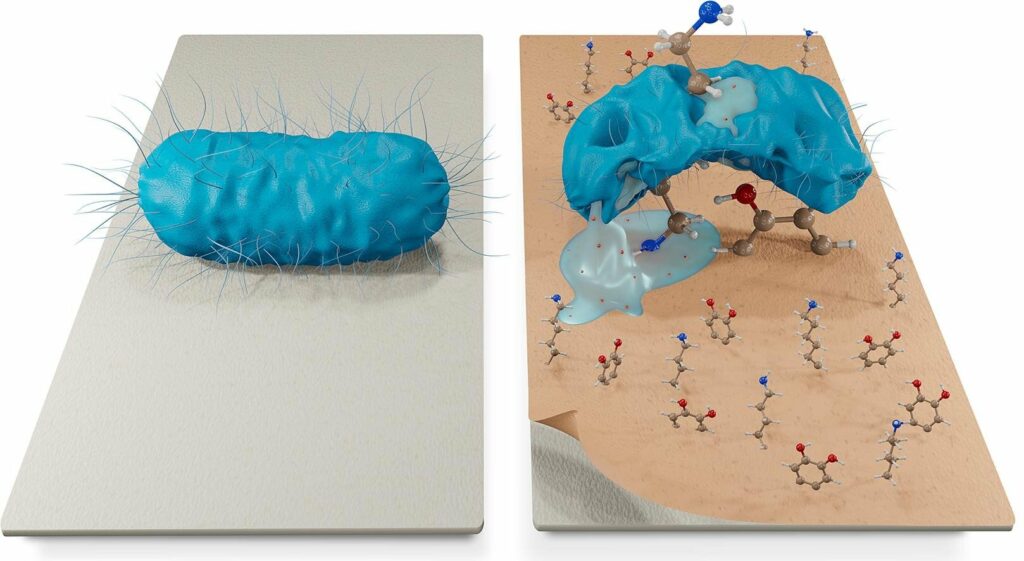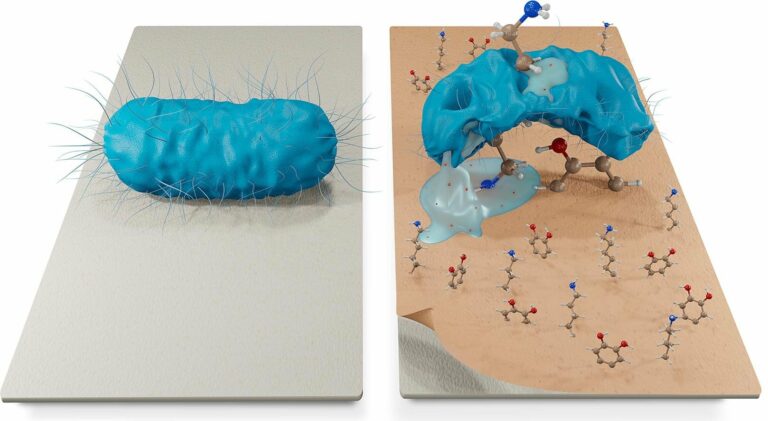Antimicrobial Coating Inspired by Mussels Safeguards Sanitary Fabrics from Contamination
The UAB and the ICN2 have collaborated to create a groundbreaking substance that combats the proliferation of pathogens, infections, and antimicrobial resistance. Taking inspiration from the adhesive properties of mussels, this material can be utilized as a protective coating for healthcare textiles, offering a viable alternative to commonly used materials like paper, cotton, surgical masks, and commercial plasters.
The findings of this research have been published in the Chemical Engineering Journal.
The excessive use of antibiotics has resulted in the emergence of antimicrobial resistance (AMR), which poses a growing threat to public health on a global scale. AMR occurs when bacteria evolve over time and no longer respond to drugs, antibiotics, and other antimicrobial medications, making infections more difficult to treat and increasing the risk of pathogen transmission, severe illness, and mortality.
In fact, both the World Health Organization (WHO) and the United Nations (UN) have highlighted that AMR represents a significant danger to human health worldwide, potentially surpassing cancer as the leading cause of death by 2050.
Given this context, the development of innovative and more effective antibacterial materials has become imperative in order to curb the spread of pathogens and prevent infections. Particularly important is the control of bacterial populations in healthcare settings such as hospitals and other medical facilities to prevent nosocomial infections, which are primarily caused by bacterial colonization on biomedical surfaces.

Today, this particular type of infection is the sixth leading cause of death in developed nations, and even more prevalent in developing countries, particularly affecting individuals with compromised immune systems and those receiving intensive care, such as burn patients, as well as individuals with chronic conditions like diabetes.
Fabrics play a crucial role in patient care as they can harbor bacterial populations. This includes the clothing worn by doctors, surgeons, and nurses, as well as medical curtains, bed sheets, pillow covers, masks, gloves, and bandages that come into direct contact with sutures and wounds. Consequently, there has been a significant focus on researching antibacterial coatings for medical fabrics.
A team of researchers from the UAB Department of Biochemistry and Molecular Biology, the UAB Institute for Neuroscience (INc-UAB), and the Catalan Institute for Nanoscience and Nanotechnology (ICN2) have developed a range of biocompatible and bioinspired coatings. These coatings are created through the co-polymerization of catechol derivatives and amino-terminal ligands.
Through their work, they have demonstrated that these coatings, inspired by mussels, are highly effective antimicrobial materials. This is due to their ability to undergo chemical changes over time when exposed to air and humidity, leading to the continuous production of Reactive Oxygen Species (ROS). Additionally, the synthetic process results in an excess of superficial free amino groups, which disrupt pathogen membranes.
UAB professor Victor Yuste and ICN2 researcher Salvio Suárez explain that one of the main components found in the coatings, catechol and polyphenol derivatives, is derived from the strands secreted by mussels. These strands enable the mussels to adhere to rocks even under extreme conditions and in saline water. The coatings developed based on this organism’s inspiration have the ability to adhere to almost any surface and are highly resistant to various environmental conditions such as humidity and the presence of fluids.
Furthermore, the use of natural compounds in these coatings helps in creating more biodegradable and biocompatible materials. These materials have lower antimicrobial resistance compared to other bactericidal systems that tend to generate resistance and lose effectiveness quickly.
In addition to these benefits, commonly used sanitary equipment like paper, cotton, surgical masks, and commercial plasters have shown inherent multi-pathway antibacterial activity. They exhibit rapid responses against a wide range of microbial species, including those that have developed resistance to extreme environmental conditions and pathogens responsible for many current infections, especially those acquired in healthcare facilities.
These pathogens include multi-resistant microorganisms from both Gram-negative (such as E. coli and P. aeruginosa) and Gram-positive (such as S. aureus, methicillin-resistant S. aureus—MRSA, and E. faecalis) categories. The materials have also demonstrated efficacy against fungi like C. albicans and C. auris.
Moreover, the coatings have proven to be effective in wet atmospheres, similar to those found in healthcare environments where respiratory droplets and other biofluids are present. This reduces the risks of indirect contact transmission. The antimicrobial activity of these coatings is attributed to a direct contact killing process, where the pathogen attaches to the coating through catechol molecules and other polyphenol derivatives.
A multi-pathway antibacterial effect is then activated, with a primary focus on generating sustained levels of ROS and electrostatic interactions with exposed protic amino groups on the surface. These antibacterial mechanisms result in a rapid (180 minutes for bacteria and 24 hours for fungi) and highly effective (over 99%) response against pathogens, causing irreversible damage to the microorganisms.
These innovative coatings are synthesized in a simple one-step process that can be scaled up, using affordable materials and environmentally friendly chemistry-based methods. Additionally, the polyphenolic nature of the coatings and the absence of external antimicrobial agents contribute to their simplicity and prevent the development of antimicrobial resistance (AMR) and its harmful effects on host cells and the environment.
It is worth noting that various parameters such as color, thickness, and adhesion have been carefully adjusted, providing a versatile solution for different material applications. Overall, these bio-inspired coatings have shown great potential for future use in clinical settings, offering a viable alternative to existing antimicrobial materials.




0 Comments